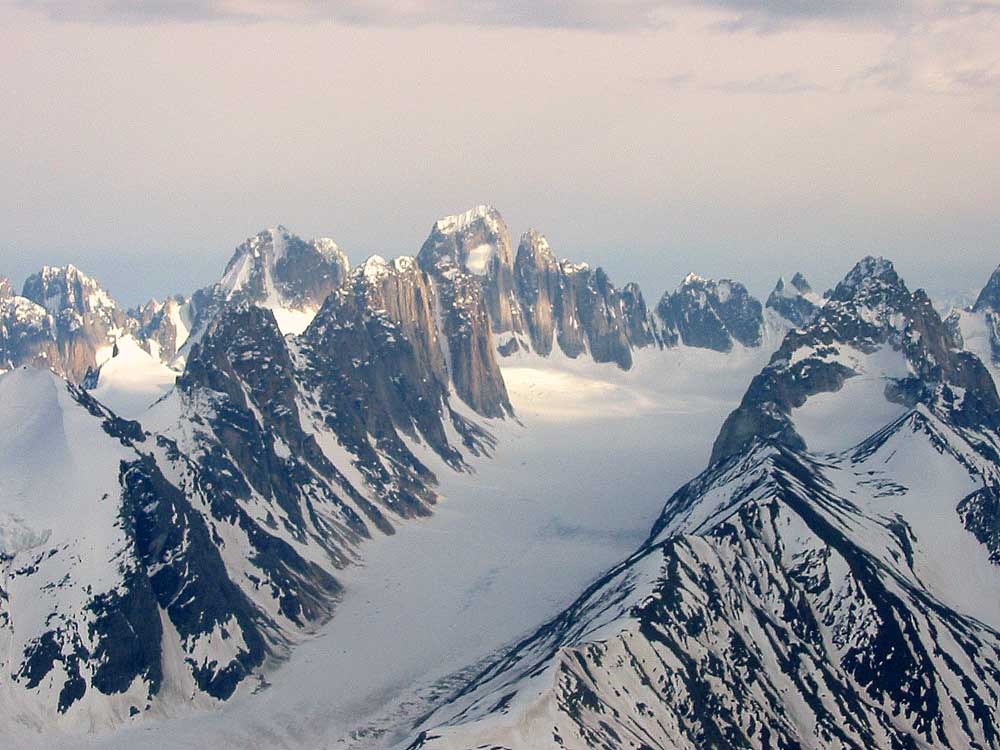Bookmonger: The allure of mountains and more
Published 9:00 am Wednesday, December 1, 2021

- In the Riesenstein Hoax, climbers claimed a photograph of the Kichatna Spires mountain range in Alaska existed in the mountains of central British Columbia.
In the Pacific Northwest, we know a thing or two about mountains — from the Coast Range, to the Olympics and the Cascades with their magnificent volcanic crown jewels.
Trending
It’s no surprise that our region has also grown some of the finest mountaineers to be found, and Seattle-based Mountaineers Books is one of the premiere publishers of books on outdoor recreation — with the topic of mountain climbing a particular specialty.
But with its latest offering, that press departs from its regular menu of climbing guides and climber’s memoirs to focus on the mountains in a more mystical way. “Imaginary Peaks” is an engaging assessment of mounts, crags, tors and even entire mountain ranges that are the alpine equivalent of castles in the air.
Author Katie Ives, editor-in-chief at Alpinist magazine, uses a Northwest-based episode as her entrée into a subject that ultimately takes readers not only across the globe but also way back in time.
Trending
The late Harvey Manning, a prolific author of Northwest hiking guides, was one of the instigators of the infamous Riesenstein Hoax.
In 1962, he and a couple of his mountaineer buddies used a photograph of a ridge of rocky spires and fabricated a story around the scene. “Riesenstein” was a remote peak in the mountains of central British Columbia that had foiled the efforts of three Austrian climbers who’d bushwhacked their way into the uncharted wilderness and made several attempts to reach the summit, only to be turned away by an unfortunate series of blizzards, avalanches and injuries.
Using aliases, the hoaxers submitted the report to Summit magazine, which published the piece, whetting the appetites of climbers everywhere to be the first to bag the challenging peak. The only problem was, they couldn’t find it.
That’s because Manning and his pals had used a photograph of the Kichatna Spires, a little-explored mountain range in Alaska, while supplying bogus cartographic details to an area about a 1,000 miles away.
The magnitude of this prank remains legendary to climbers even today, but Ives points out that the appeal of unexplored territory and imaginary peaks has been a draw for centuries — the search for El Dorado or Shangri-La are only two examples of a litany of efforts — sometimes purposely fictional, other times merely miscalculated, to fill in the uncharted spaces on any map.
Ives is an erudite guide through these adventures, both real and chimerical.
She introduces us to Egeria, a woman in the fourth century who traveled thousands of miles across the Mediterranean in quest of sacred peaks to climb.
She shares the 12th century rumors of Prester John, a priest-king whose elusive Edenic empire inspired expeditions across Asia and Africa.
There are also Ibn Battuta, Marco Polo, Mallory and Irvine — plus so many more.
With these carefully researched and richly told stories, Ives reminds us of the human capacity for boundless wonder. Today, in our era of global satellite imaging, she urges us not to lose our power of imagining.
‘Imaginary Peaks’ by Katie Ives
Mountaineers Books – 304 pp – $26.95









